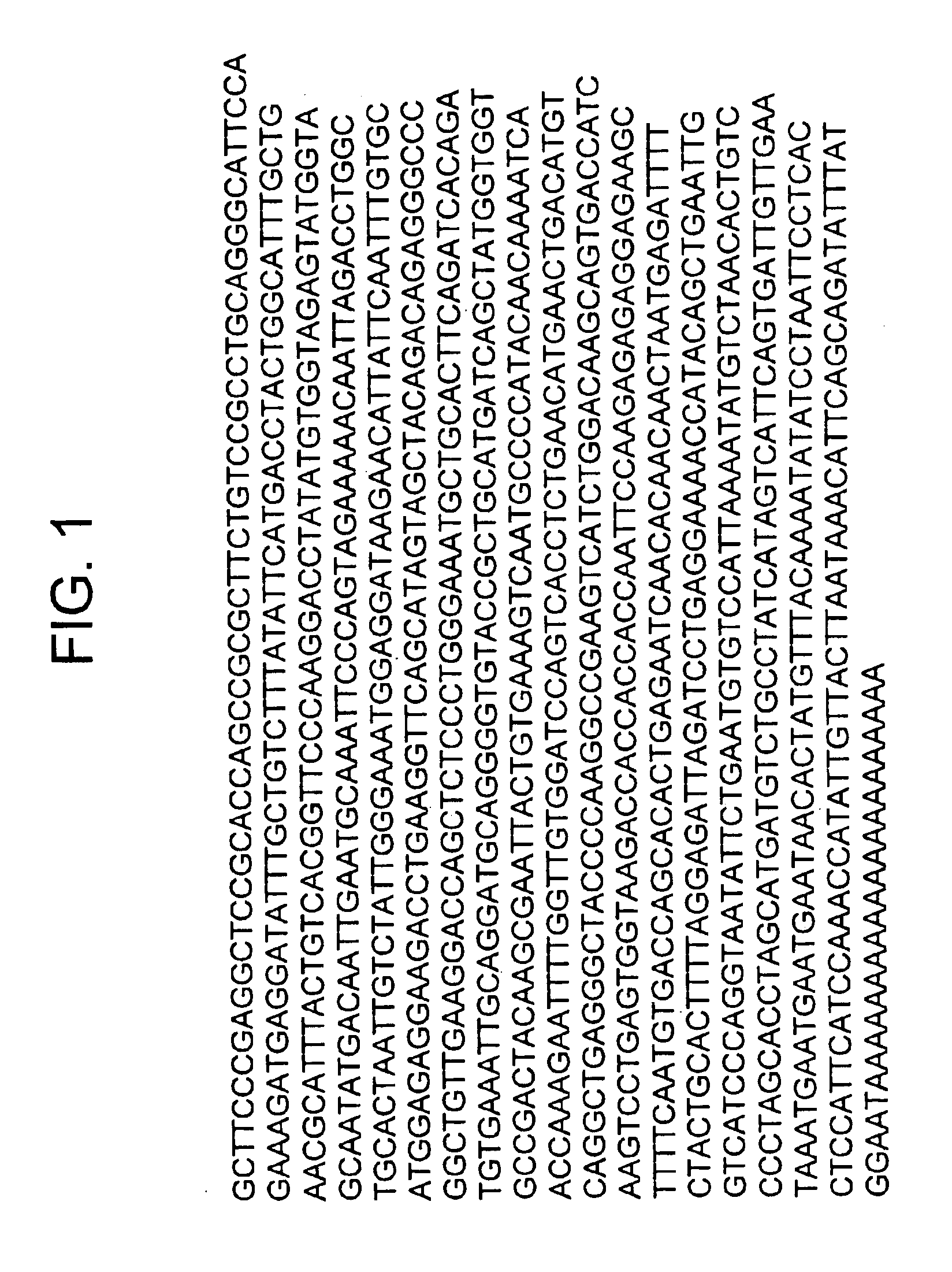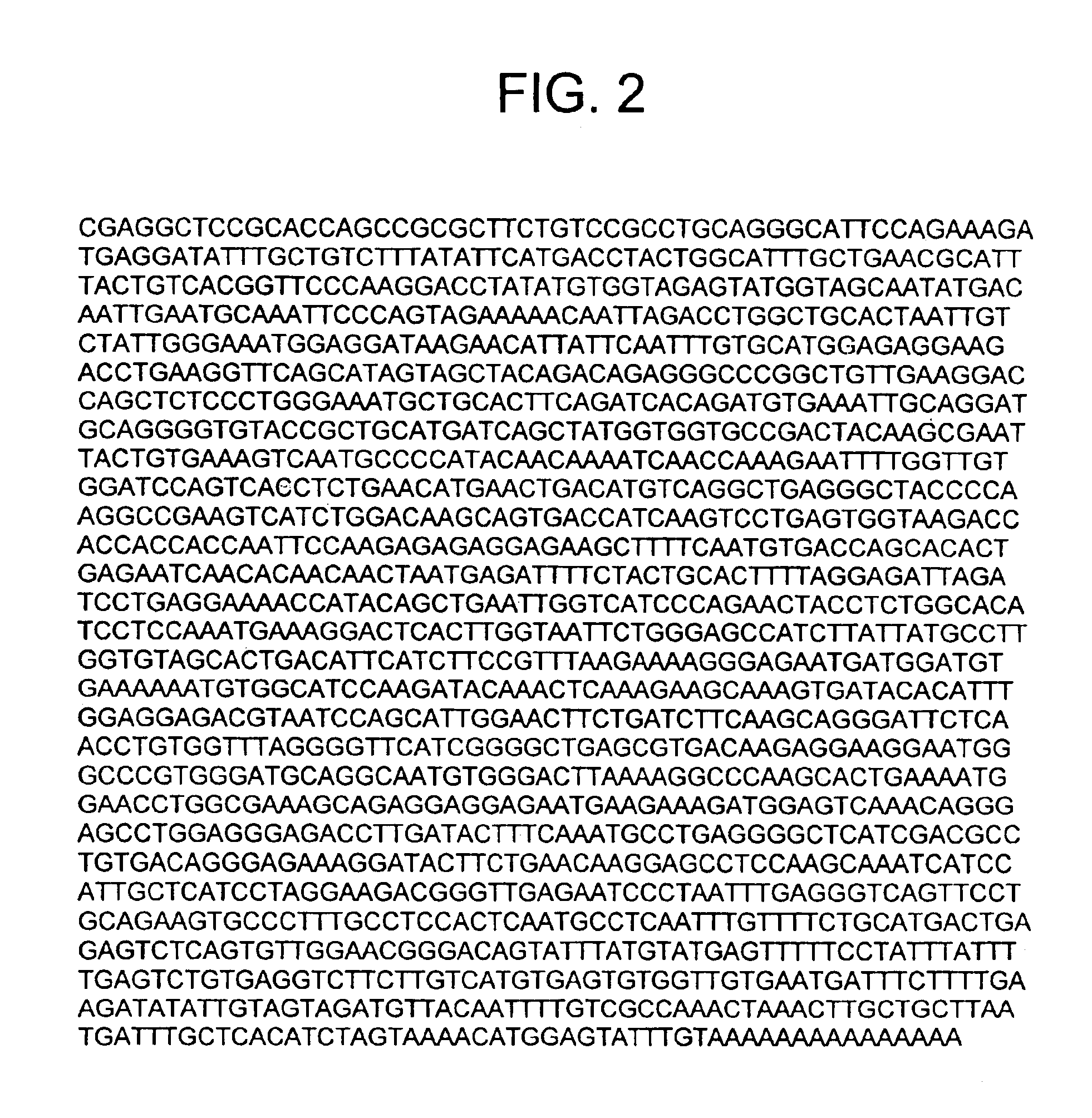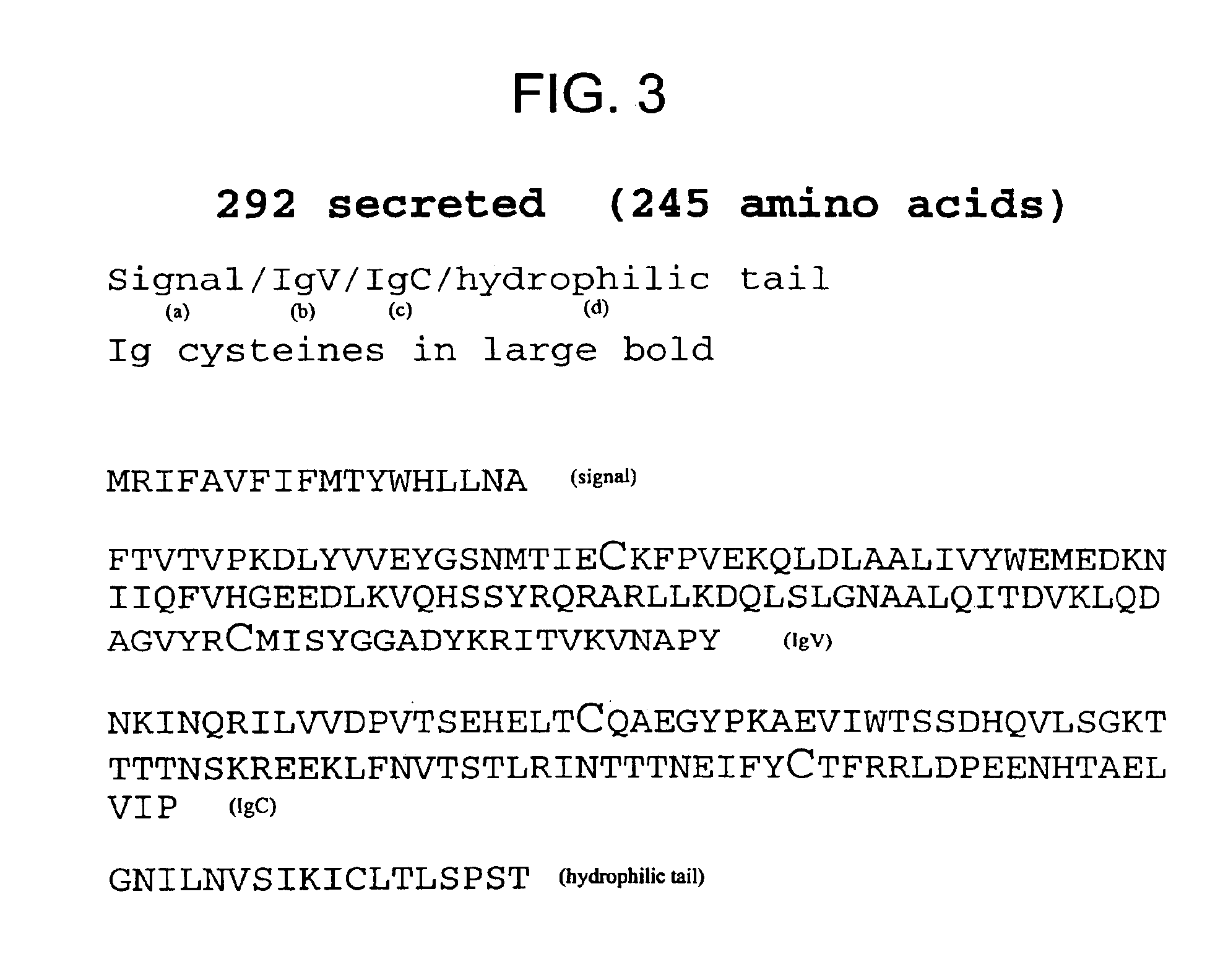Nucleic acids encoding costimulatory molecule B7-4
a costimulatory molecule and nucleic acid technology, applied in the field of nucleic acids encoding costimulatory molecules b74, can solve problems such as downrnodulation of immune responses
- Summary
- Abstract
- Description
- Claims
- Application Information
AI Technical Summary
Benefits of technology
Problems solved by technology
Method used
Image
Examples
example 1
Isolation of B7-4 cDNA Molecules
[0300]The protein sequence of the extracellular domain of human B7-1 was used to search the public databases for nucleic acid molecules encoding homologous polypeptides. Two overlapping sequences in the EST database, AA292201 and AA399416, were identified. These sequences were used to isolate full-length B7-4 cDNAs from human activated keratinocyte and placental cDNA libraries as follows.
[0301]Oligonucleotides with the sequence CAGCTATGGTGGTGCCGACTACAA (SEQ ID NO: 5) and AGGTGCTAGGGGACAGTGTTAGACA (SEQ ID NO: 6) from these ESTs were synthesized. These oligonucleotides were used to prime a PCR reaction using as template cDNA prepared by reverse transcription of mRNAs from the spleen of a case of follicular lymphoma, activated B cells, INF-γ activated keratinocytes, normal spleen, and placenta. Conditions were 94° C., 1 min; 94° C., 30 sec. 56° C., 30 sec, 68° C., 1 min for 35 cycles; 68° C., 3 min, hold 4° C. All templates gave a band of the expected si...
example 2
Expression of B7-4 mRNA
[0303]An mRNA of the soluble form of B7-4 is predicted to be about 10.2 kb, though other sizes are possible. The mRNA of the second form is about 3.8 kb, with minor mRNAs of 1.6 and 6.5 kb.
[0304]Expression of B7-4 mRNA was analyzed. RNA was prepared by guanidine thiocyanate homogenization and cesium chloride centrifugation. Equal amounts of RNA (approximately 2 μg poly(A)+ RNA) were electrophoresed on an agarose gel, blotted, and hybridized to a portion of 32P-labeled B7-4 cDNA common to both the B7-4S and B7-4 M forms. These B7-4 mRNAs are highly expressed in placenta, lung, and heart and are moderately expressed in the thymus. In addition, these B7-4 polypeptides are weakly expressed in skeletal muscle, kidney, pancreas, prostate, testis, ovary, small intestine, colon, and peripheral blood leukocytes. They were also found to be very weakly expressed in liver or brain. B7-4 mRNAs were not expressed in unstimulated monocytes, but were strongly induced by IFN-γ...
example 3
Binding of B7-4 Molecules to T Cell Ligands or Antibodies
[0306]COS cells were transfected with either vector DNA (pcDNAI), or an expression plasmid containing the B7-4M cDNA. After 72 hours, the transfected COS cells were detached by incubation in PBS containing 0.5 mM EDTA for 30 min. at 37° C.
[0307]The ability of COS cells expressing B7-4M to bind to various T cell ligands and antibodies was tested. FACS analysis of binding of CD28Ig, CTLA4-Ig, and control Ig by B7-4-transfected COS cells showed that neither CD28Ig nor CTLA4-1 g was bound by B7-4 (FIG. 8). The ability of COS cells expressing B7-4M to bind to IgG and murine ICOS-his fusion protein was also tested. No binding of human B7-4 to murine ICOS was detected (FIG. 9). As shown in FIG. 10, FACS analysis revealed binding of BBI (anti B7-1 and anti B7-3), but not IgM or 133 (anti-B7) antibodies to B7-4-transfected COS cells (experiments shown employed unstable transfectants).
PUM
| Property | Measurement | Unit |
|---|---|---|
| Temperature | aaaaa | aaaaa |
| Temperature | aaaaa | aaaaa |
| Fraction | aaaaa | aaaaa |
Abstract
Description
Claims
Application Information
 Login to View More
Login to View More - R&D
- Intellectual Property
- Life Sciences
- Materials
- Tech Scout
- Unparalleled Data Quality
- Higher Quality Content
- 60% Fewer Hallucinations
Browse by: Latest US Patents, China's latest patents, Technical Efficacy Thesaurus, Application Domain, Technology Topic, Popular Technical Reports.
© 2025 PatSnap. All rights reserved.Legal|Privacy policy|Modern Slavery Act Transparency Statement|Sitemap|About US| Contact US: help@patsnap.com



